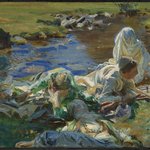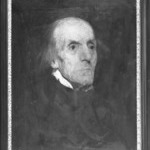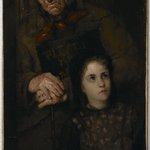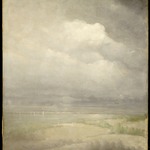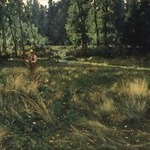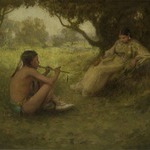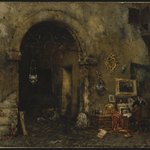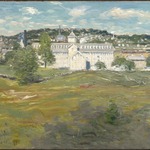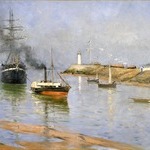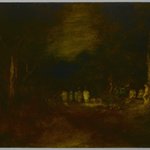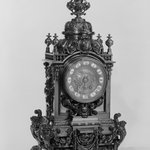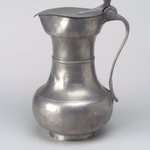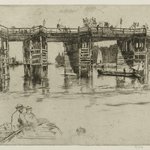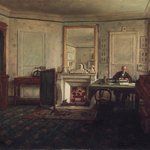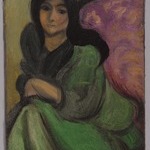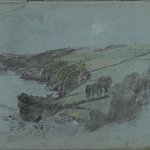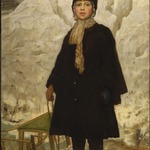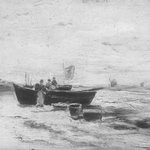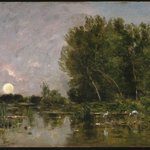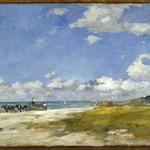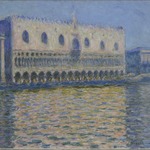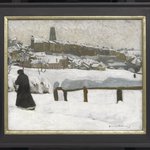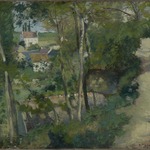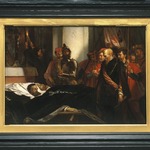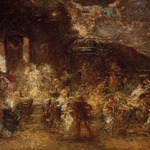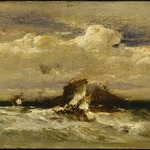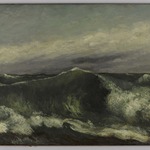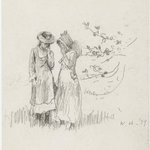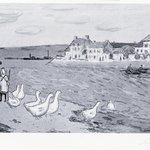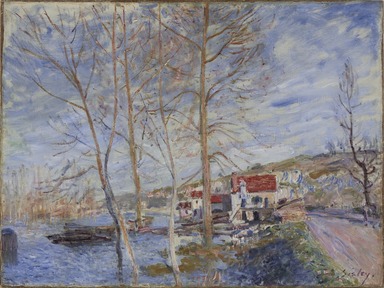
Flood at Moret (Inondation à Moret)
Alfred Sisley
European Art
In the 1870s, the Seine and its tributaries, including the Loing, were flooded several times as a consequence of increased human impact on the environment, particularly as a result of agricultural deforestation. Drawn to the changing conditions of nature, Alfred Sisley painted the boatyard buildings and partly submerged trees on the banks of the Loing, choosing to depict a moment of calm in the flood’s aftermath. To capture the ephemeral conditions, he used sketchy, energetic brushstrokes, even leaving patches of canvas bare around the wispy, windswept trees.
MEDIUM
Oil on canvas
DATES
1879
DIMENSIONS
21 1/4 x 28 1/4 in. (54 x 71.8cm)
Frame: 30 1/4 x 37 1/4 x 2 1/2 in. (76.8 x 94.6 x 6.4 cm) (show scale)



SIGNATURE
Signed lower right: "Sisley."
COLLECTIONS
European Art
ACCESSION NUMBER
21.54
CREDIT LINE
Bequest of A. Augustus Healy
PROVENANCE
Prior to 1920, provenance not yet documented; before 1920, sold at Durand-Ruel; before 1920, acquired by Joseph F. Flanagan of Boston, MA; January 14, 1920, purchased at American Art Association, New York, NY, “Old and Modern Paintings of Sterling Artistic Distinction”, no. 55, by Aaron Augustus Healy of Brooklyn, NY; 1921, bequeathed by Aaron Augustus Healy to the Brooklyn Museum.
Provenance FAQ
EXHIBITIONS
MUSEUM LOCATION
This item is not on view
CAPTION
Alfred Sisley (British, active France, 1839–1899). Flood at Moret (Inondation à Moret), 1879. Oil on canvas, 21 1/4 x 28 1/4 in. (54 x 71.8cm). Brooklyn Museum, Bequest of A. Augustus Healy, 21.54 (Photo: Brooklyn Museum, 21.54_PS11.jpg)
IMAGE
overall, 21.54_PS11.jpg. Brooklyn Museum photograph, 2022
"CUR" at the beginning of an image file name means that the image was created by a curatorial staff member. These study images may be digital point-and-shoot photographs, when we don\'t yet have high-quality studio photography, or they may be scans of older negatives, slides, or photographic prints, providing historical documentation of the object.
RIGHTS STATEMENT
No known copyright restrictions
This work may be in the public domain in the United States. Works created by United States and non-United States nationals published prior to 1923 are in the public domain, subject to the terms of any applicable treaty or agreement.
You may download and use Brooklyn Museum images of this work. Please include caption information from this page and credit the Brooklyn Museum. If you need a high resolution file, please fill out our online application form (charges apply).
The Museum does not warrant that the use of this work will not infringe on the rights of third parties, such as artists or artists' heirs holding the rights to the work. It is your responsibility to determine and satisfy copyright or other use restrictions before copying, transmitting, or making other use of protected items beyond that allowed by "fair use," as such term is understood under the United States Copyright Act.
The Brooklyn Museum makes no representations or warranties with respect to the application or terms of any international agreement governing copyright protection in the United States for works created by foreign nationals.
For further information about copyright, we recommend resources at the United States Library of Congress, Cornell University, Copyright and Cultural Institutions: Guidelines for U.S. Libraries, Archives, and Museums, and Copyright Watch.
For more information about the Museum's rights project, including how rights types are assigned, please see our blog posts on copyright.
If you have any information regarding this work and rights to it, please contact copyright@brooklynmuseum.org.
RECORD COMPLETENESS
Not every record you will find here is complete. More information is available for some works than for others, and some entries have been updated more recently. Records are frequently reviewed and revised, and we welcome any additional information you might have.

